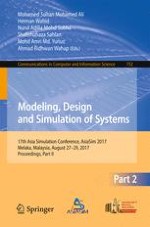This two-volume set CCIS 751 and CCIS 752 constitutes the proceedings of the 17th Asia Simulation Conference, AsiaSim 2017, held in Malacca, Malaysia, in August/September 2017.
The 124 revised full papers presented in this two-volume set were carefully reviewed and selected from 267 submissions. The papers contained in these proceedings address challenging issues in modeling and simulation in various fields such as embedded systems; symbiotic simulation; agent-based simulation; parallel and distributed simulation; high performance computing; biomedical engineering; big data; energy, society and economics; medical processes; simulation language and software; visualization; virtual reality; modeling and Simulation for IoT; machine learning; as well as the fundamentals and applications of computing.
